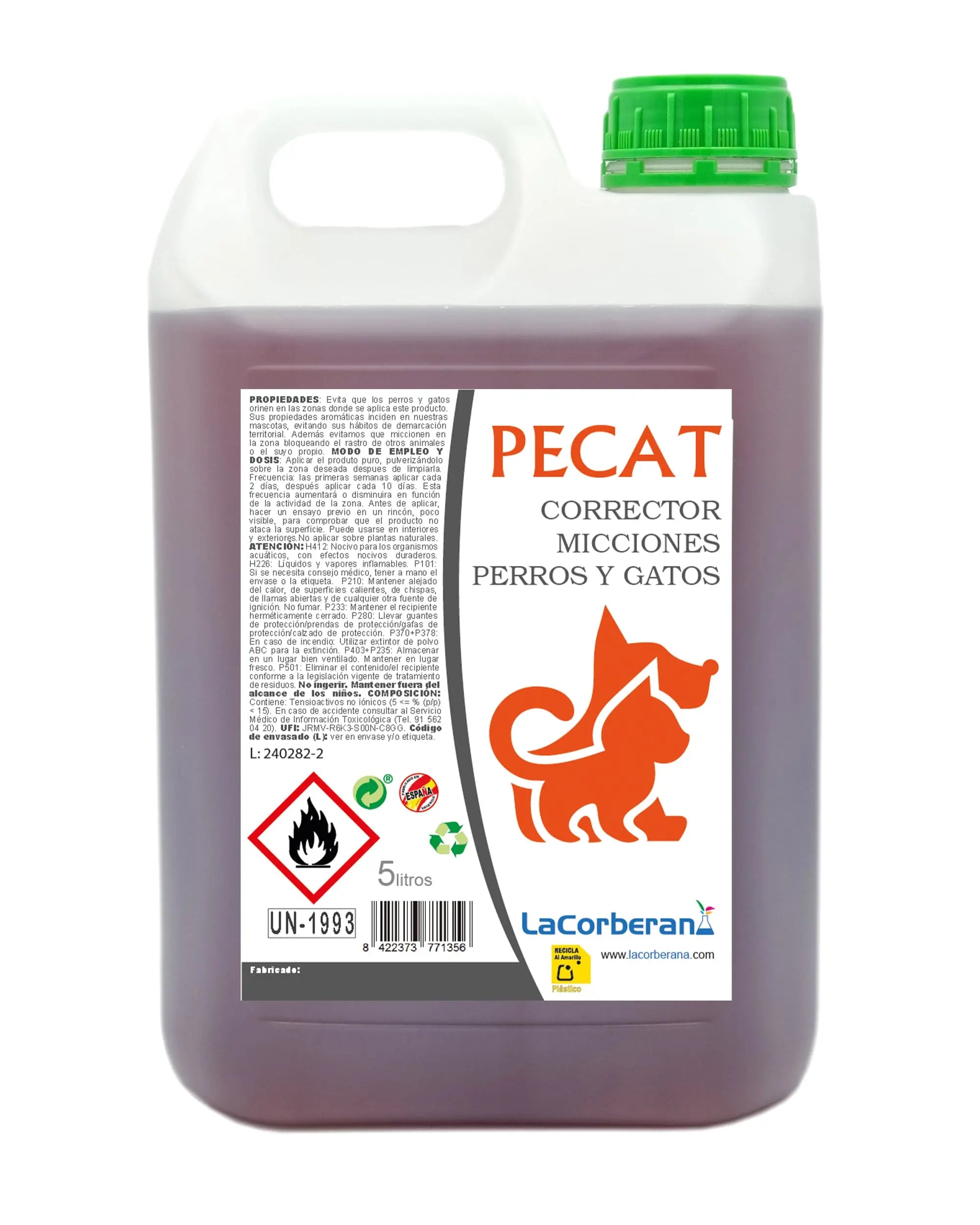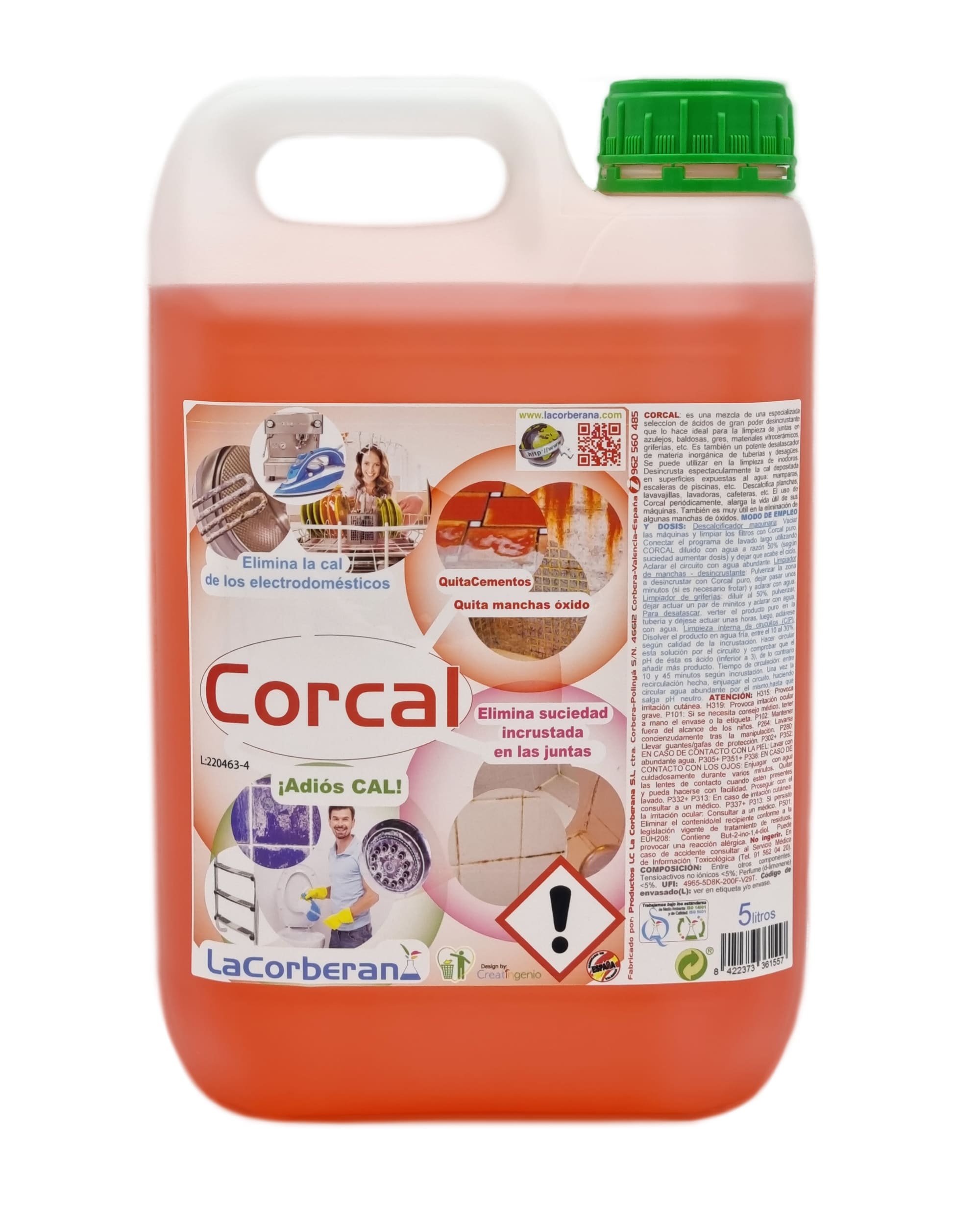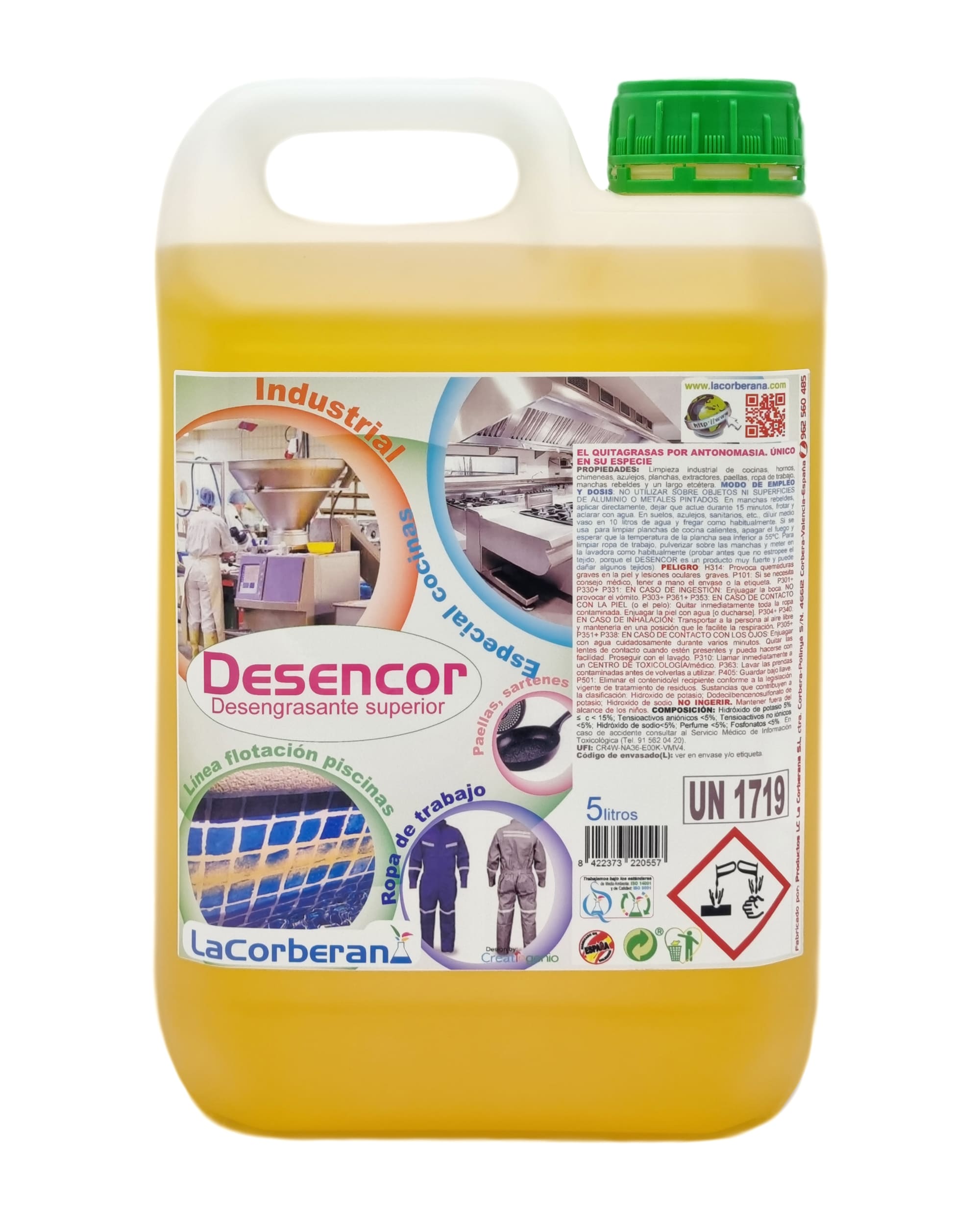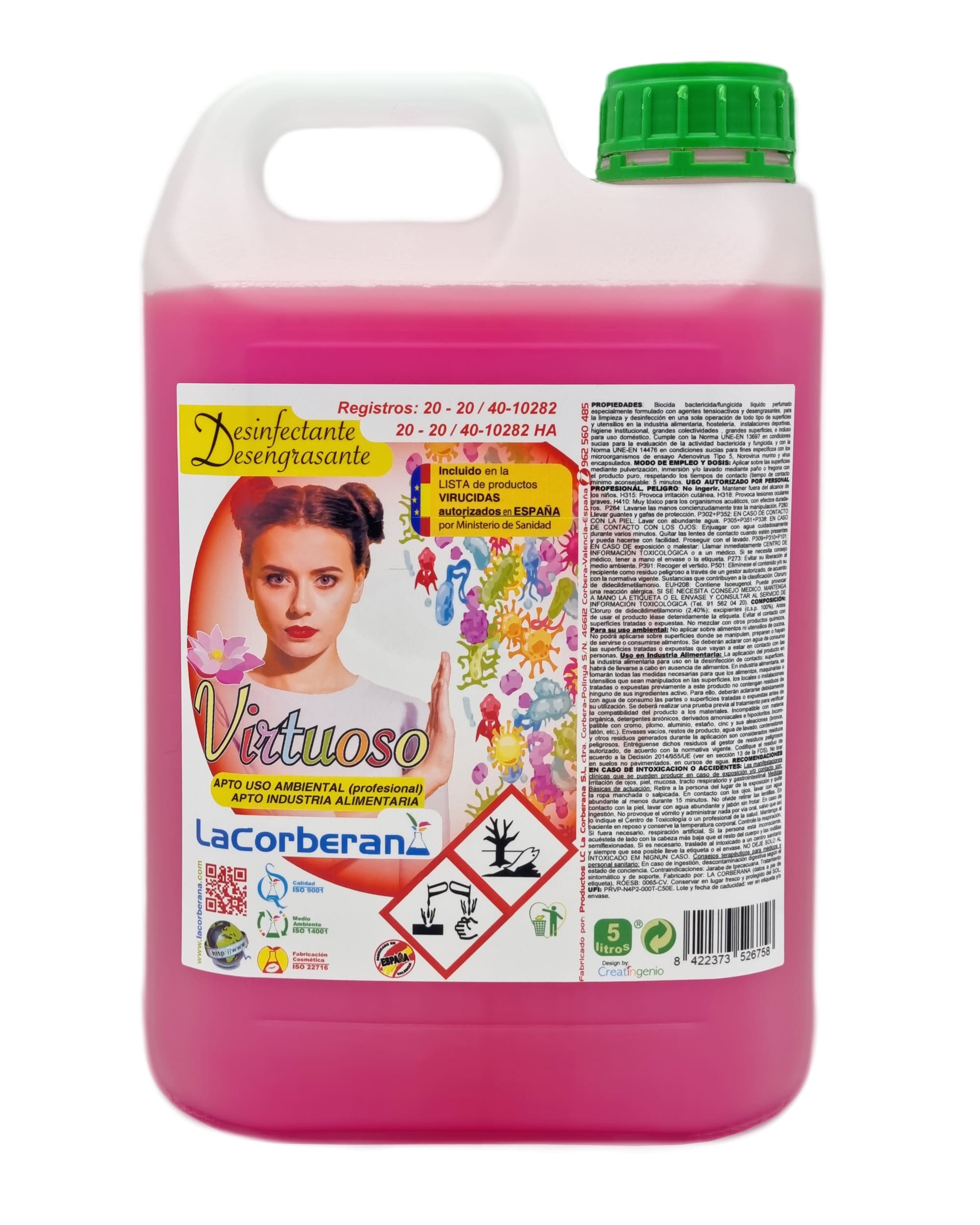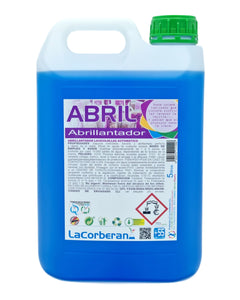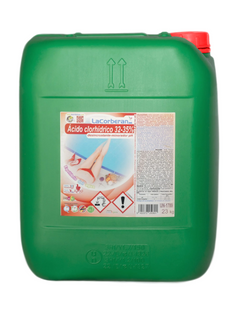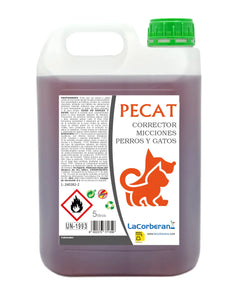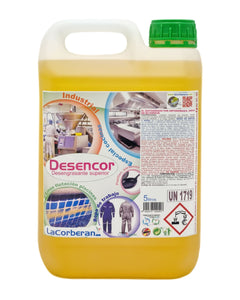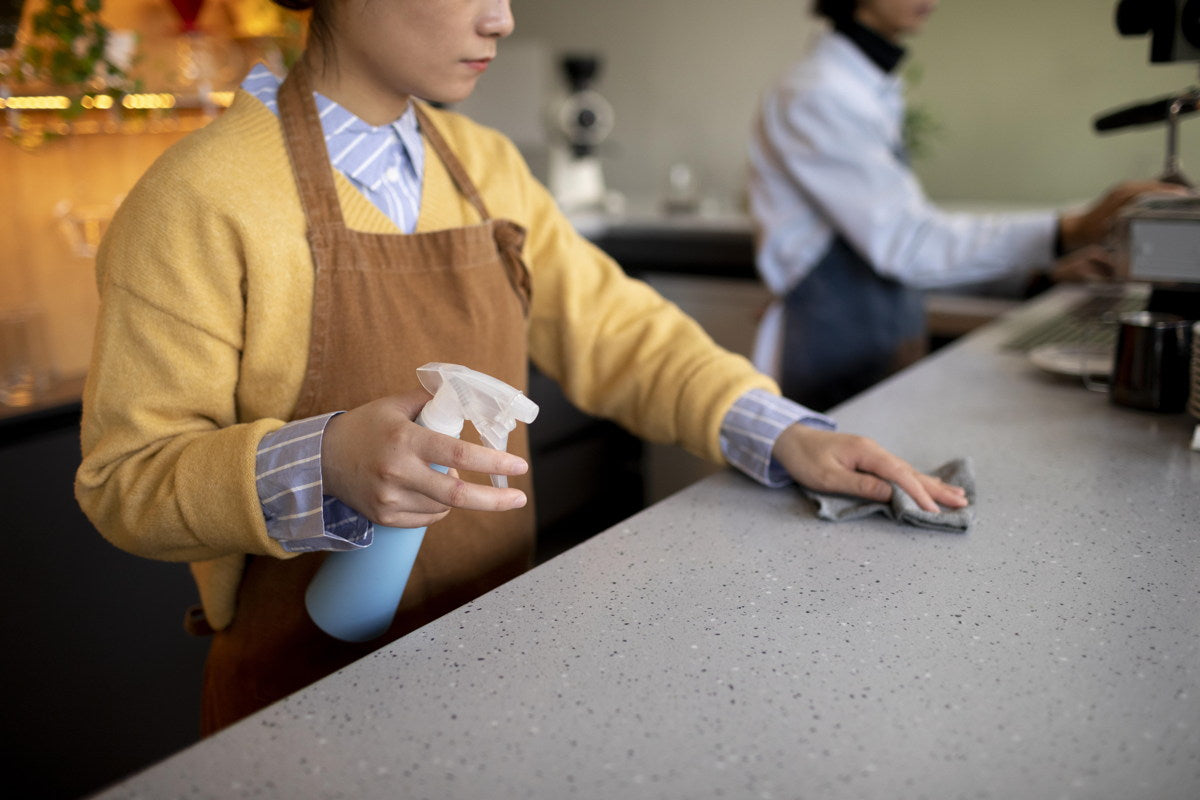He restaurant sector in Spain It is one of the brands that has evolved the most in recent years, adapting to the changing demands of consumers and offering a wide variety of culinary options for all tastes and budgets.
However, customers not only expect to enjoy good food and good service, but also a impeccable hygiene in the preparation of dishes and maximum rigor in the cleaning of the premises .
Every bar and restaurant must comply with a series of hygiene and sanitary regulations to ensure the safety and well-being of customers.
Therefore, from La Corberana , as a specialist in the manufacturing and selling cleaning products for restaurants , we have developed a Manual to ensure effective restaurant cleaning to comply with health regulations and diners' expectations.
Restaurant cleaning plan: what and how to clean
A restaurant's cleaning plan is a critical component to ensuring both the food security as a pleasant environment for customers and workers.
Therefore, planning must address the total cleaning, Taking into account all the aspects of the service and the different areas of the establishment , from the kitchen to the dining room, including bathrooms and storage areas. Below, let's look at an example of a restaurant cleaning and disinfection plan to meet the main requirements of current legal regulations.
Cleaning the restaurant kitchen
Work surfaces and kitchen equipment, such as ovens, deep fryers, barbecue grills, mixers and other food preparation utensils etc., must be cleaned and disinfected after each use to avoid cross contamination.
For efficient and safe cleaning, The equipment must be dismantled and each part cleaned. to ensure effective sanitation. For example, removable parts of a deep fryer should be soaked in hot water with detergent and degreasers, scrubbed to remove residue, and then disinfected.
Another critical element is the cleaning restaurant hoods , as they play a crucial role in ventilating and extracting smoke, odors and grease generated during cooking.
In this sense, for efficient cleaning it is necessary unplug the extractor hood from the power source to avoid accidents, Disassemble removable parts , such as filters and grease panels, and immerse them in degreaser or other specific products for cleaning filters.
It should also be used degreasing products to clean the inside of the hood , including the internal walls and any non-electrical components. For the outside, it is best to use a mild solution of water and detergent to avoid damaging the finish.
On the other hand, Cleaning dishes, cutlery and glassware must follow a meticulous process to ensure the elimination of food residue, microorganisms and any other type of contamination.
This cleaning process requires:
- A pre-wash with low-pressure water to manually remove food residue from dishes, cutlery and glassware.
- Washing in a dishwasher with temperature setting for cleaning dishes, cutlery and glassware.
- Use of professional detergents and disinfectants to ensure effective cleaning and avoid chemical residues on dishes.
- After the wash cycle, make sure that dishes, cutlery and glassware are rinsed with hot water to remove any detergent residue.
- Drying should be done freely in the air by natural evaporation, in a clean and disinfected area to avoid contamination.
- If you are in a hurry, cloths should be avoided. Disposable paper towels should be used for drying.
Refrigeration chambers and freezers
Cleaning and maintenance of refrigeration chambers and freezers is another essential point to comply with the cleaning control in restaurants , as they are crucial for food preservation, preventing the growth of pathogenic microorganisms and the decomposition of products.
- Periodic cleaning is required to remove food residue, accumulated ice and any type of contamination.
- Cleaning should be done with a mild solution of warm water with neutral soap or mild liquid detergent to clean internal and external surfaces of refrigerators and freezers.
- Regular defrosting is necessary to prevent excessive ice build-up.
- Raw food must be stored separately from cooked and ready-to-eat food. To do this, it is necessary to use shelves or separate areas within the chambers to avoid cross-contamination.
- It is advisable to carry out periodic inspections of door seals to ensure a tight seal and avoid temperature fluctuations.
Walls and floors
Cleaning walls and floors is essential to maintain a hygienic and safe environment for both customers and staff.
The methodology and products used must be effective in the removal of grease, dirt, stains and possible pathogens, while ensuring safety and minimising the impact on the environment.
- For grease stains on walls near cooking areas, a degreasing solution can be used to remove accumulated grease.
- It is essential to protect equipment near these areas, such as fryers, stoves, cutting surfaces, etc., from splashes of cleaning products. To do this, it is recommended to cover all surfaces.
- For walls with washable paint or tiles, professional cleaning products can be used for deep cleaning.
- When it comes to floor cleaning, dry sweeping is not recommended to prevent suspended dust particles from dispersing into the environment and infecting food, appliances or utensils used for cooking.
- You should scrub with surface cleaners appropriate for the type of floor (ceramic, porcelain, wood, etc.).
- For areas requiring disinfection, such as food preparation areas, a disinfectant solution should be used after cleaning to ensure proper disinfection of work areas.
Following a restaurant kitchen cleaning protocol will help restaurant owners avoid food safety issues, maintain high hygiene standards, reduce the risk of cross-contamination, and ensure customer satisfaction.
Cleaning the bar and dining area
In addition to cleaning the kitchen, special attention must be paid to the cleaning the spaces that diners have access to , as this contributes to generating trust and a positive impression of the restaurant.
The perception of cleanliness and order in areas such as dining rooms, the bar, bathrooms, and any waiting area, is directly proportional to the customer satisfaction and the image of quality and care that the establishment wishes to project.
To ensure a welcoming and safe environment, the following cleaning practices should be adopted:
Waiting areas and bars
These areas must be kept tidy and clean, with surfaces and seats regularly disinfected, which implies:
- Clean shelves, wine racks and bottles to remove dust and ensure there is no liquid residue.
- If there are mirrors behind the bar, they should be cleaned with a glass cleaner to remove stains and fingerprints.
- Beverage dispensers and draft beer taps must be cleaned and disinfected daily to prevent the buildup of residue, bacteria and possible contamination that may affect the quality of beverages and food safety in the restaurant.
- Letters, menus or any other reading material should be cleaned frequently.
- Chairs, stools or sofas in waiting areas should be cleaned and disinfected regularly.
- The floor must be kept free of toothpicks, napkins, food remains or drink stains, so the floor must be mopped before each service.
Cleaning and disinfection of tables and chairs
Tables and chairs must be cleaned after each use , applying disinfectant solutions that not only clean but also ensure the elimination of pathogens.
It may seem like a minor matter, but the Choosing cleaning products and supplies For restaurants, it is essential, since they must be safe and suitable for areas where customers consume food.
Floor maintenance
Floor cleaning is key not only for aesthetic reasons, but also for hygiene and safety reasons. They should be reviewed several times a day. to remove stains, spills and residue to maintain a flawless appearance and prevent accidents.
And at the end of the service or before starting it , the floor must be thoroughly cleaned with a surface cleaner suitable for the type of floor.
Cleaning the bathrooms
Bathrooms should be checked and cleaned frequently , keeping supplies such as toilet paper, soap, and hand towels well stocked, and ensuring that the facilities are in proper working order.
Regular cleaning should include the cleaning and disinfecting all surfaces , from toilets, sinks, faucets, mirrors, door handles to the floor, using specific products to sanitize and deodorize.
It is also important empty the trash cans and ensure that waste is disposed of properly following waste management regulations. This is essential to maintain cleanliness and hygiene in toilets for avoid bad odors and the proliferation of germs .
In addition to daily cleaning, it is necessary to perform a deep cleaning on a regular basis , paying special attention to high-touch areas such as door handles and faucets.
By the way, displaying the cleaning protocols and sanitary measures taken by the restaurant can reinforce customer confidence in the establishment's hygiene practices .
Deep cleaning in restaurants and bars to avoid cross contamination
The importance of preventing cross contamination in the kitchen is essential to ensure food safety , that is, prevent the unintentional transfer of microorganisms, bacteria or other contaminants from a contaminated surface, food or utensil to another that was originally clean or safe for consumption.
A study conducted by NSF International, a leading global public health and environmental organization, identified the major sources of bacterial contamination in the kitchen . These include blender seals, can openers, spatulas, refrigerator vegetable and meat storage drawers, ice, water dispensers, and cold meat lids.
If these utensils and food handling areas If not cleaned properly, they can become breeding grounds for pathogenic microorganisms associated with foodborne illnesses, such as salmonella and listeria, as well as promoting the growth of molds and yeasts due to poor hygiene.
To avoid cross contamination it is necessary to have and follow the cleaning procedures manual in restaurants and Use specific cleaning products for restaurants that comply with the technical-sanitary requirements that ensure the decontamination and sanitization of the environment.
In The Corberana We are dedicated to the manufacture and sale of products for cleaning and disinfecting restaurants and bars . Our products are specifically designed to offer a wide range of high-quality cleaning solutions ranging from specialized detergents to effective disinfectants, designed to maintain a hygienic and safe environment in your establishment .
Cleaning regulations for bars and restaurants
According to the Royal Decree 1021/2022 and so on regulations regarding cleaning and disinfection in restaurants , it is necessary to maintain a clean and safe environment in all areas of the restaurant, including the kitchen, bathrooms, storage areas and spaces where food is served.
According to the Ministry of Health , failure to comply with the hygiene and health standards established by law may result in sanctions and fines of up to €600,000 .
Furthermore, failure to comply with these rules can also affect the reputation of the establishment, putting customer trust and loyalty at risk. Therefore, It is essential that restaurant and bar owners and managers ensure thorough cleaning of their premises .
Other regulations in force for cleaning standards in restaurants:
Law 14/1986, of April 25, General Health
